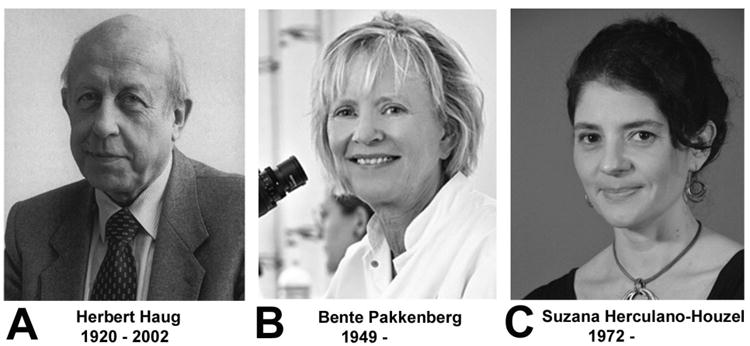Fig. 3.

A-C. Photographs of individuals who had a major influence on concepts regarding the cellular composition of the human brain. This composite shows the three main investigators who's work debunked several myths, including the claim of a 10:1 glia-neuron ratio and the trillion glia myth. A. Herbert Haug, professor at the University of Lübeck, Germany, correctly estimated in 1986 the glia-neuron ratio to be less than 1, based on his own cell counts, and he refuted the prevailing myth of neuronal fallout with normal aging. Photograph originally published by Wolfgang Kühnel (Annals of Anatomy, 185:293, 2003), and reproduced with permission by Elsevier. B. Bente Pakkenberg, professor at Bispebjerg University Hospital, Denmark, a pioneer in the use of stereological methods, determined cell numbers in numerous human brain structures, including cerebral cortex, cerebellum, and the effect of aging, diseases, and alcohol use on neuron numbers in human brains. Photograph by Claus Peuckert, claus peuckert photography, reproduced with permission. C. Suzana Herculano-Houzel, professor at Vanderbilt University, developed a highly efficient alternative counting method, the isotropic fractionator. Historically, this method was the first that revealed and effectively communicated the true number of non-neuronal cells and the true ratio of non-neuronal to neuronal cells in human brains. Photo credit: Luiza Herculano-Houzel. Reproduced with permission.
